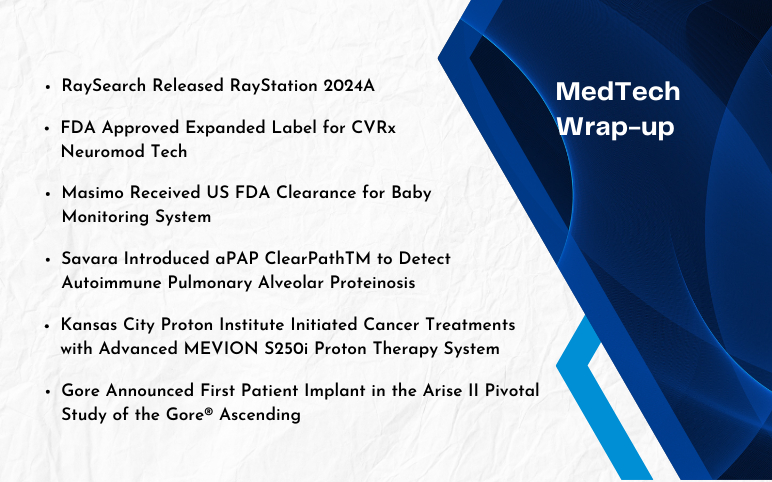Rheumatoid Arthritis (RA)
Rheumatoid arthritis (RA) is a chronic inflammatory disorder that causes joint inflammation and pain. In RA the immune system doesn’t work properly and attacks the lining of the joints. Women are found to be more affected by Rheumatoid Arthritis as compared to men. It is observed that nearly 75% of Rheumatoid Arthritis patients are women. Moreover, 1 to 3% of women may get affected with rheumatoid arthritis during their lifetime. Similarly, age is another factor for Rheumatoid Arthritis, as it most often begins between the ages of 30 and 50. However, it can start at any age.
As per the DelveInsight, the total Rheumatoid Arthritis prevalent cases in the 7MM were observed to be 4,356,793 in 2017. Among the 7MM, the United States, in 2017, accounted for the highest number of cases in the 7MM. While in the EU5, the highest number of prevalent Cases of RA were in Germany. The lowest number of cases was observed in Spain during the study period.
Currently, the Rheumatoid Arthritis treatment options include Medicine (for the long term to relieve symptoms and slow the progress of the condition, supportive treatments (such as physiotherapy, podiatry, and occupational therapy). Surgery is also considered to correct the joint problems that had developed over a period of time.
The Medications include conventional Disease-modifying antirheumatic drugs (DMARDs), Biologics DMARDs, targeted synthetic DMARDs, and others. DMARDs may be prescribed individually or in combination as an initial part of the treatment. As per the DelveInsight, the therapeutic dynamics of Rheumatoid Arthritis is anticipated to change in the coming years owing to the increase in investment and the R&D activities by key pharma companies like GlaxoSmithKline, Taisho Pharmaceutical, and R-Pharm, who have their key candidates in the late clinical-stage of development.
In addition to these, other companies like Pfizer, Roche, Cel-sci, MorphoSys, R Pharm, Novartis, and AstraZeneca are in the race to provide therapeutics solutions for Rheumatoid Arthritis. With a large number of potential therapies in the pipeline for the treatment of RA, the treatment space is likely to undergo significant transformation in the coming years. Apart from the rich emerging pipeline, the other factors such as an increase in the prevalence population of Rheumatoid Arthritis, and an increase in the geriatric population are expected to contribute significantly to the Rheumatoid Arthritis Therapeutics Market.
Lupus
Lupus is a chronic (long-term) autoimmune disease that results in inflammation, swelling, pain, and damage to the body parts. In lupus, the body system which tends to fight infections becomes hyperactive and attacks healthy tissue instead. The exact causes of lupus are unknown. skin, joints, internal organs like the lungs, brain, kidneys, blood, and heart are the most commonly affected parts of the body. Since it can affect different body parts it results in several diverse ranges of symptoms. However, pain or swelling in joints, muscle pain, mouth ulcers, swollen glands, and red rashes are the most common symptoms of Lupus. Systemic Lupus Erythematosus (SLE), Cutaneous lupus (or Discoid lupus erythematosus), Drug-induced lupus, Neonatal lupus are the most common types of lupus. Anyone can have lupus, however, women, people from certain racial or ethnic groups, and also those who have a family member with lupus or another autoimmune disease are at higher risk as compared to other groups.
Among different types of Lupus, systemic lupus erythematosus, or “SLE” is the most common and chronic inflammation, affecting multiple organs, especially kidneys, joints, and skin. It results in fatigue, weight loss, and fever. As per DelveInsight estimates, the total systemic lupus erythematosus diagnosed prevalent cases in the 7MM was found to be 484,213 in 2017. Among the 7MM, the estimates show a higher population of Systemic Lupus Erythematosus in the United States with 259,474 cases in 2017.
The treatment pattern varies according to the severity of symptoms and the affected body parts. The overall aim is to achieve remission and prevent further organ damage. Anti-inflammatory medications, disease-modifying drugs, steroid creams, corticosteroids, and several other treatments are available in the market. At present companies such as AstraZeneca, ImmuPharma, Eli Lilly, Janssen Pharmaceutical, Merck KGaA, ILTOO Pharma, Biogen, Celgene, UCB Pharma/Biogen, Neovacs, Idorsia Pharmaceuticals, Kezar Life Sciences, Bristol-Myers Squibb, Xencor, and others are engaged in the development of the Systemic Lupus Erythematosus therapies. The launch of the therapies in the coming years is expected to significantly revolutionize the Systemic Lupus Erythematosus Market Dynamics.
Multiple Sclerosis (MS)
Multiple Sclerosis is a chronic condition that affects the brain and spinal cord (central nervous system). In Multiple Sclerosis the immune system attacks the protective sheath (myelin). Multiple Sclerosis causes signs and symptoms such as vision problems, tingling and numbness sensations, fatigue, balance problems, bladder dysfunction, cognitive changes, and many others. Multiple Sclerosis can be subdivided into different categories such as Relapsing-Remitting MS (RRMS), Progressive-Relapsing MS (PRMS), Secondary-Progressive MS (SPMS), and Primary Progressive MS (PPMS). As per the DelveInsight, the majority of people are affected with relapsing-remitting MS followed by primary progressive MS.
It is observed that age, family history, race, and ethnicity, and gender are the major risk factors associated with Multiple Sclerosis. The male-to-female ratio of Multiple Sclerosis patients differs among various countries, however, females are found to be largely affected. Similarly, the gender analysis
As per DelveInsight, the total Multiple Sclerosis prevalent population in the 7MM was approximately 1,315,649 in 2017 and is expected to grow in the coming years. Among the EU5 countries, Germany had the highest prevalent population of Multiple Sclerosis, followed by France. On the other hand, Spain had the lowest prevalent population in 2017. Japan had the lowest prevalent population of Multiple Sclerosis, among the 7MM countries.
The US FDA over the years has approved several therapies for different forms of Multiple Sclerosis. Apart from approved therapies, at present several of the promising candidates are in the pivotal stage of clinical development, which is expected to enter the market in the near future. The upcoming therapies are targeted towards symptomatic improvement in Multiple Sclerosis patients such as walking disabilities. The key players involved in the development of Multiple Sclerosis Therapies include Johnson and Johnson, Novartis, TG Therapeutics, Adamas Pharmaceuticals, (Merck KgaA), and others.
Diabetes Type 1
Type 1 Diabetes is a chronic condition in which the pancreas produces little or no insulin. It is also known as insulin-dependent diabetes. People with any age group may be affected by Type 1 Diabetes, however, children and adolescents are the most commonly affected as compared to other age groups. According to the International Diabetes Federation (IDF), over one million children and adolescents under the age of 20 have Type 1 Diabetes.
In a study conducted by Rosenbauer et al. (2019), it was reported that in a group of patients aged above 18 years suffering from Type 1 Diabetes, the prevalence of males was 543.5 per 100,000 persons, whereas the prevalence of females reported was 445.0 per 100,000 persons. According to the National Diabetes Statistics Report (2020), 34.2 million people in the United States have diabetes in 2018, accounting for 10.5% of the total population
Despite the availability of several therapeutics treatment options in the Type 1 diabetes landscape, there are several challenges that are yet to be tackled to fulfill the needs of the patients. Type 1 Diabetes treatment plan aims to keep blood sugar levels as close to normal as possible so that the patient can live a healthy and active life and delay or prevent complications. Moreover, the treatment pattern varies based upon a person’s health needs. Currently, the key players such as Provention Bio, Oramed, Dompe Pharmaceutical, ActoBiotics, REMD Biotherapeutics, and Tolerion, etc., are developing therapies to influence the Type 1 Diabetes Market Dynamics. Apart from these several other companies are in the preclinical stages.
Inflammatory Bowel Disease (IBD) (Ulcerative Colitis and Crohn’s Disease)
Inflammatory Bowel Disease (IBD) is a group of disorders that result in inflammation of the gastrointestinal tract or gut. IBD causes abdominal cramps, bloody diarrhea, and fever. Ulcerative colitis and Crohn’s disease are the two most common inflammatory bowel diseases. Both the diseases cause an abnormal response to the body’s immune system. It is observed that nearly 10% of cases of Inflammatory Bowel Disease exhibit the features of both CD and UC and it is commonly referred to as Indeterminate Colitis (IC). As per James M. Dahlhamer et. al., “in 2015, an estimated 1.3% of US adults (3 million) reported being diagnosed with IBD (either Crohn’s disease or ulcerative colitis)”.
Ulcerative Colitis – Ulcerative Colitis causes inflammation in the large intestine or colon. As per Delveinsight analysis, the total Ulcerative Colitis prevalent cases in the United States were found to be 1,008,823 in the year 2020.
The Ulcerative Colitis treatment options comprise the use of medication and alterations in diet and nutrition. However, surgical procedures may also be required to repair or remove affected portions of the GI tract. Medications are helpful in dealing with the inflammation of the colon and consequently helps the tissues to heal. Currently, several conventional treatment options such as Aminosalicylates, Corticosteroids, Immunomodulators, Biologic therapies, and Janus kinase (JAK) inhibitors are available in the market.
Presently, some of the key global pharmaceutical companies such as Aimmune Therapeutics, AbbVie, Boehringer Ingelheim, Hoffmann-La Roche, Genentech, DBV Technologies, Sanofi/Regeneron, Vedanta Biosciences, Eli Lilly and Company, Arena Pharmaceuticals, Kaleido Biosciences, and others are involved in developing Ulcerative Colitis Therapies. As per DelveInsight’s estimation, the targeted therapies market is dominated by anti-TNF agents, however, classes such as anti-integrin, interleukin inhibitor, and JAK inhibitors are expected to enter the Ulcerative Colitis Market in the coming years owing to their better clinical profile. In the coming years the entry of novel therapies with better clinical profile and patient convenient RoA, increase in market penetration of targeted/advanced therapies, involvement of digital technology, and new biomarkers for diagnosis of Ulcerative Colitis are expected to drive the market growth forward in the coming years.
Crohn’s Disease – Crohn’s disease can affect any segment of the gastrointestinal tract from the mouth to the anus. Mostly it affects the portion of the small intestine before the large intestine/colon. According to the Crohn’s & Colitis Foundation of America (CCFA), as many as 70,000 new cases of IBD are diagnosed in the United States each year. As per DelveInsight’s analysts, in the United States, the total prevalent cases of CD was 825,165 in the year 2020 which are expected to grow in the coming years.
The current treatment for Crohn’s Disease groups the therapeutic agents according to the severity levels, with an ultimate goal to maintain clinical remission. The treatment goal of Crohn’s Disease aims to maintain clinical remission. The treatment pattern for Crohn’s Disease includes a group of therapeutic agents according to the severity levels of the disease. The treatment often begins with a less effective and potentially less toxic treatment strategy. In some cases, surgery is considered if the medical therapy is unable to control the disease or its complications.
At present several emerging therapies are under development for Crohn’s Disease with a novel mechanism of action that is expected to provide an efficient therapeutic result for the treatment of patients affected with Crohn’s Disease. The key companies in the Crohn’s Disease Therapeutics Landscape include Elli Lilly and Company, RedHill Biopharma, AbbVie, Boehringer Ingelheim, Gilead Sciences, and Galapagos NV, Celgene, Janssen Pharmaceuticals, and several others. The rich pipeline for Crohn’s Disease brings a positive ray of hope for a better treatment pattern in the upcoming years.
What lies ahead
Autoimmune disease can affect any part of the body and can lead to weaken bodily function and in some cases can cause severe life-threatening complications. The rising prevalence is also causing a remarkable burden on the healthcare infrastructure. To deal with the rising prevalence, pharmaceutical companies worldwide are diligently involved in the discovery of potential new treatments options for Autoimmune disease. Several of the therapies at present are in the advanced stages of clinical development which are expected to enter the market in the near future.
In the coming years, a better understanding of immune function, the rising awareness, and knowledge of the treatment options among the general population increasing healthcare expenditure, rise in R&D activities, and improvement in the diagnosis methodologies, are expected to significantly improve the market dynamics in the coming years. Similarly, the rise in the number of geriatric people and the market penetration of advanced therapies are also expected to create a positive shift in the market growth.



